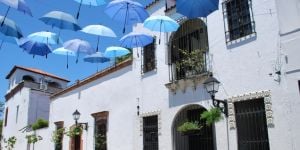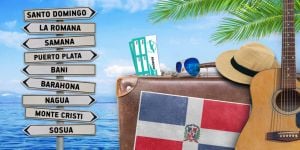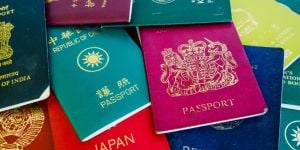Public transportation goes just about everywhere you can imagine, in the big cities, and even in the smaller ones there is usually a motoconcho to be had. The types of transportation are various sizes of buses on a route, public cars, which are cars on a route, public motor cycles, which take you to where you want to go nearby, and taxiis, which function pretty much like taxiis anywhere.
For most expats, barring perhaps the poor Haitians, the price is pretty reasonable. But every time the gas goes up, the prices are likely to go up to, via nationwide strikes. Funny thing, though, if gas goes down, the prices don't.
Safe? Well, more or less. I have been pickpocketed more times than I care to admit, and have thwarted pickpockets many times as well. They are just so good at their job. But even though you will run into that kind of problem on public transportation, it is unlikely you will be assaulted. Of course, you must take reasonable precautions, and not be wandering around the city on public transportation very late at night; that is the time you take a taxi. Almost all the drivers are armed with some kind of weapon, commonly a gun, a knife, or a baseball bat, but these are to thwart attempted robberies, not to attack the riders.
Oh, I forgot to mention that there is also a new metro, which is excellent. It only has one line so far, but what it does, it does well.
There are distinct rules that public transportation riders observe. Cars are generally expected to hold two people in the right front bucket seat, and four people in the back. The third person to get into the back is expected to scoot to the front edge of the seat, in order to fit the forth person, when one joins the group. That is an example of the rules. There are rules for where to sit in buses with fold down seats (two people on that), and I won't go into it all. Suffice it to say, you will learn it.
You didn't ask if public transportation is comfortable. Often it is not. You may find yourself nearly suffocating from the heat in the back of a van or car that has no ventilation at all. Often car windows don't roll down, having been broken and never repaired; add to that the squish factor, the fact that you are crammed in like sardines, and you can imagine how hot and smelly it can get. It is also uncomfortable when it rains, because you may sit in a car that has a thorougly wet seat because of a broken window or a previous drenched passenger. You also may have to get out in the pouring rain to let another passenger out (you only exit from curbside).
Which form of transportation do I use most in Santo Domingo? Like most people, I use them all. If it is raining, I prefer a bus. If I am in a hurry, I need a car or taxi. If I have a long way to walk off the given routes, I take a motorcycle. If I am going to Villa Mella from the University area, I take the metro. When I have made a large purchase, or bought something difficult to take on a bus, I get a taxi.
I'm not going to put the price of the transportation, because it changes frequently, and each kind of transportation and different locations have their own prices.
Another plus to public transportation is that you will greatly improve your knowledge of the culture and language.
I enjoyed seven years of not owning a car. It is not at all hard to get along without one. The occasional taxi fare for when you have bought too many groceries to take on the bus, still keeps you way under the cost of car ownership, especially considering the ever-increasing price of gas.
 Accommodation in Santo Domingo
Accommodation in Santo Domingo Working in Santo Domingo
Working in Santo Domingo Leisure in Santo Domingo
Leisure in Santo Domingo Working in the Dominican Republic
Working in the Dominican Republic Setting up a business in the Dominican Republic
Setting up a business in the Dominican Republic The healthcare system in the Dominican Republic
The healthcare system in the Dominican Republic The Dominican Republic lifestyle
The Dominican Republic lifestyle Citizenship in the Dominican Republic
Citizenship in the Dominican Republic



